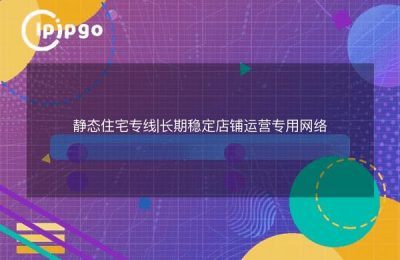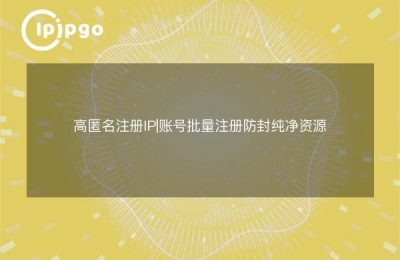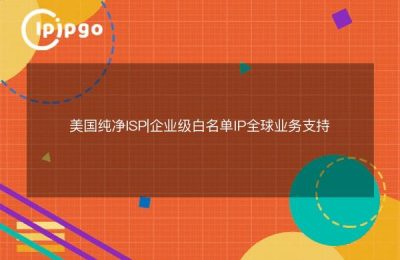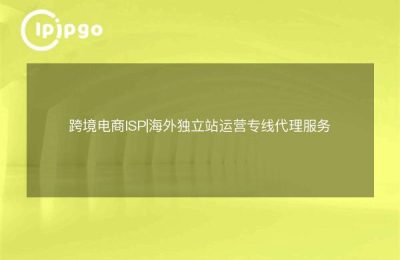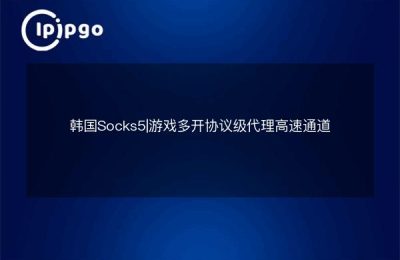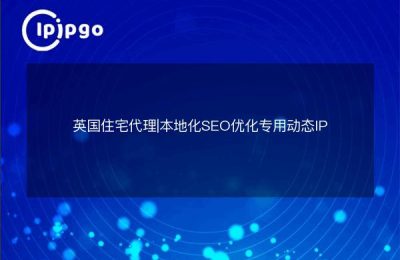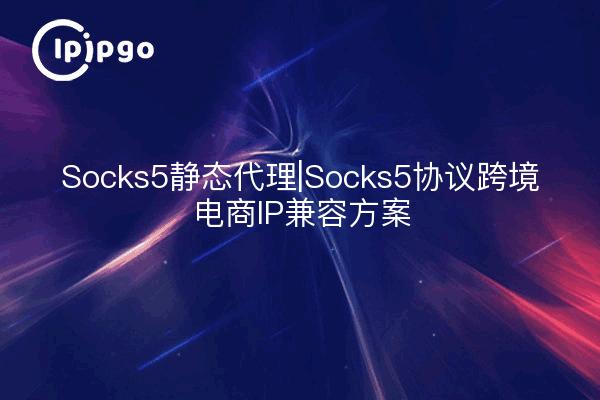
The central role of Socks5 static proxies in cross-border e-commerce scenarios
When e-commerce sellers need to manage store accounts in multiple regions, a stable network environment is the basis for normal business operation.Socks5 static proxy is used by theFixed IP address + protocol level adaptationIt can effectively avoid account anomalies caused by frequent IP changes. Compared with dynamic proxies, static IPs are more in line with the platform's logic of recognizing "normal users", which is especially prominent in payment interface docking and store backstage management scenarios.
Hands-on guide to key configuration steps
There are three core parameter configurations that you need to focus on to use ipipgo's Socks5 static proxy:
| parameter term | Configuration points |
|---|---|
| protocol version | Choosing Socks5 protocol over HTTP |
| Authentication Methods | Dual authentication with username + password |
| Terminal Binding | It is recommended to enable the device whitelisting feature |
In specific tool configurations (e.g. Postman or homegrown systems), special attention needs to be paid toCorrespondence between port number and protocol versionThe standard ports provided by ipipgo include 1080/1086/1088, and it is recommended to prioritize the use of non-standard ports to reduce the feature duplication rate.
Multi-platform compatible program design
For the characteristics of different e-commerce platforms, a sub-scenario agent strategy is recommended:
- Amazon store management: fixed country + city-level IP targeting
- Shopify Store Operations: Matching Browser Fingerprints to IP Attributions
- Dedicated site server: using IP rotation + fixed IP whitelist combination
ipipgo's.City-level positioning technologyIt can be pinpointed to specific cities such as Los Angeles and Manchester, and with the real operator attributes of the residential IP, it can effectively pass the platform's geolocation verification.
Exception Troubleshooting Manual
When encountering connection failures or access anomalies, it is recommended to troubleshoot in the following order:
- Detect whether the local network has a transparent proxy enabled
- Verify that the IP address is in the blacklist of the target platform
- Checking the protocol integrity of Socks5 clients
- Test connectivity of base ports (e.g. 1080)
The ipipgo control panel providesReal-time IP health checkfunction, you can quickly locate the problem node. It is recommended to check the IP reputation score regularly and change the IP in time when the score is lower than 80 points.
Frequently Asked Questions QA
Q: How often do I need to change my static proxy IP?
A: It is recommended to set the replacement cycle according to the sensitivity of the business, 3-7 days for normal business, and daily for high security requirement business. ipipgo supports the setting of automatic replacement schedule.
Q: How do I configure to manage multiple country stores at the same time?
A: Multiple proxy profiles can be created by ipipgo'smultinational IP poolFunctions to associate static IPs with different countries
Q: How do I deal with a surge in platform CAPTCHAs?
A: Immediately suspend the use of the current IP, submit a diagnostic report in the ipipgo background, the system will automatically match a cleaner IP segment
By reasonably utilizing the technical characteristics of Socks5 static proxy, combined with ipipgo's global coverage of residential IP resources, e-commerce enterprises can build a stable and reliable network infrastructure. It is recommended that new users verify the whole process through ipipgo's test environment before formal deployment to ensure protocol compatibility in all aspects.

